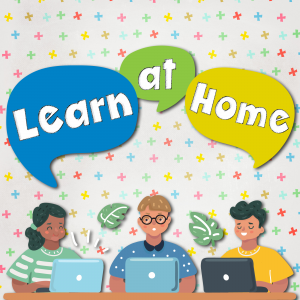
This post is part of a blog series: 9 Strategies for Successful Reading
If you haven’t read the other posts in the series, please read Strategy #1: Prepare, Strategy #2: Making Connections and Background Knowledge, Strategy #3: Asking Questions, and Strategy #4: Prediction.
You and your child are reading a picture book in which a group of children are walking under a bright sun. They are wearing sunglasses and carrying towels and goggles. If you ask your child where the kids in the picture are going, they might say, “to the beach” or “swimming.” What your child is doing is making an inference. Drawing inferences is our next reading strategy.
Strategy #5: Drawing Inferences
Drawing Inferences can be one of the most difficult strategies to teach and learn. How do you help your child learn something that basically is not there? Drawing inferences is about figuring out what is not said and is not on the page. Many of us refer to inference as ‘reading between the lines’, but that does not help a child in school who is struggling to read. It does not make sense to them—what does it mean to read between the lines? It means you have to find clues and hints the author drops and use them to figure out what the author intends.
To make an inference your young reader must use two things:
- Clues from the text
- Their own background knowledge
Clues from the text
In order to discover what is inferred in a text, your reader may have to do a little digging! The author might not state outright what they mean or what knowledge they want taken away from the text.
What the reader must do is find the clues the writer leaves behind. How does your reader do that? By asking questions! We discussed Asking Questions in Strategy #3.
These same questions apply here: Who, What, When, Where, Why, and How. The question, “I wonder” is also helpful.
Their own background knowledge
After your child starts asking questions of the text, whether it’s a fiction book or an article for school, they can then apply their background knowledge. By using their own background knowledge in addition to what the author actually says, your reader can find the clues to help answer the questions.
For example, in the book The Story of Civil Rights by Wil Mara, the author never comes out and says, “everyone must be treated fairly and equally under the law.” It is implied. That is what a reader would have to infer from their reading.
When first picking up this book, your child might ask questions like, “I wonder what the struggle for Civil Rights was like?” or “How did people feel about Civil Rights?” The author answers some those questions outright—that’s what the author says. But what does the author believe and yet does not say?
To figure that out, your reader can use their background knowledge. They might think about how they feel about the issue or what they’ve noticed in their own life or previous learning. Your child might recognize that they don’t like the way it feels when they are deliberately left out of something. From there, they can deduce that the author feels the same too, that everyone should be treated fairly.
Let’s return to our example of the illustration of kids walking with towels and wearing sunglasses. If a child infers that the kids in the picture are going to the beach or going swimming, they are basing that inference on their background knowledge and making connections (Strategy #2).
They are using their background knowledge of what they’ve experienced in their own lives to draw an inference. For kids who live near the ocean, the first inference would probably be that the kids in the picture are going to the beach. For landlocked kids, the first thing to come to mind would most likely be a swimming pool. It all depends on their background knowledge.
Even early readers can make inferences about what a book is saying without outright saying it. In the Elephant and Piggie book My Friend is Sad by Mo Willems, Piggie is sad and Gerald tries to make her happy.
While it is not stated directly, it is clear from the actions taken by Gerald and by the facial expressions of the two characters, that helping a friend through their sadness is a good thing. Your beginning reader can infer that this is how a good friend behaves.
Don’t get discouraged if your young reader struggles with drawing inferences. It’s tricky! Keep practicing by having them ask questions of the text and drawing connections with their own experiences. At some point they will be able to "read between the lines."
 About this blog series
About this blog series
We’ll go over 9 strategies in this series of blog posts. Your child might not need all nine. One might work magic! If you are a good reader and haven’t ever thought about how you read, you might be surprised to discover you use some or all of these strategies.
And again, a reminder that good readers are not smarter than readers who struggle. Not at all! Many highly intelligent and successful people have struggled with reading, and they became good readers. What they do, and what all good readers do, is develop habits and strategies that help them comprehend what they are reading and give them skills for when they get stuck.
Visit Learn at Home for even more great resources, including:
- Free online tutoring
- Online tools available 24x7x365
- Recommended items from our collection that you can pick up curbside

